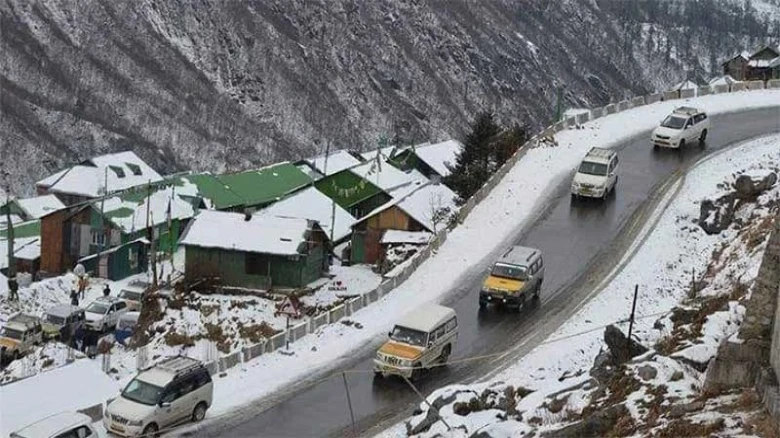Tourists flock to Sikkim during these months to witness popular destinations like Gurudongmar Lake...
Digital Desk: Sikkim, known for its breathtaking landscapes, received the year's first snowfall on Tuesday, transforming the state into a picturesque winter wonderland. Accumulating up to 2 inches of snow at key spots, the landscape now boasts a serene beauty that attracts tourists seeking the charm of snow-covered destinations.
The recent snowfall is part of a series of winter occurrences forecasted for the region. Starting from December 20 to 22 and again from December 25 to 29 in the previous year, Sikkim experienced flurries. The chilly embrace of winter continued into 2024, with snowfall from January 2 to 4, January 8 to 10, and ongoing from January 12 to 17. More snow is expected from January 20 to 29.
In Gangtok, the current climate is generally clear, with a high of 24°C and variable southwesterly winds. However, this clarity masks the cold that grips higher altitudes, where temperatures can plummet. Towns like Lachen and Thangu in North Sikkim, known as the coldest, can experience temperatures as low as minus 10 degrees Celsius during winter.
Tourists flock to Sikkim during these months to witness popular destinations like Gurudongmar Lake, Tsomgo Lake, Zero Point, Yumthang Valley, and Zuluk blanketed in snow. Despite the severe cold, these places remain alluring, with Gurudongmar Lake standing out for a portion of its waters that never freeze, even in the harshest winters.
While the snowfall adds to the enchantment, it also brings challenges. Heavy snowfall disrupted road communication, leaving at least 900 tourists stranded along the J N Road and highlighting the impact on the tourism sector.
The best time to visit North Sikkim is typically from May to September when the weather is moderate.
However, for those seeking the magic of snowfall, December through February is ideal. It's important to note that while the average winter temperature in Sikkim ranges from 10°C to 4°C, it can drop to freezing at high altitudes, leading to the closure of some areas due to extreme conditions.

Leave A Comment